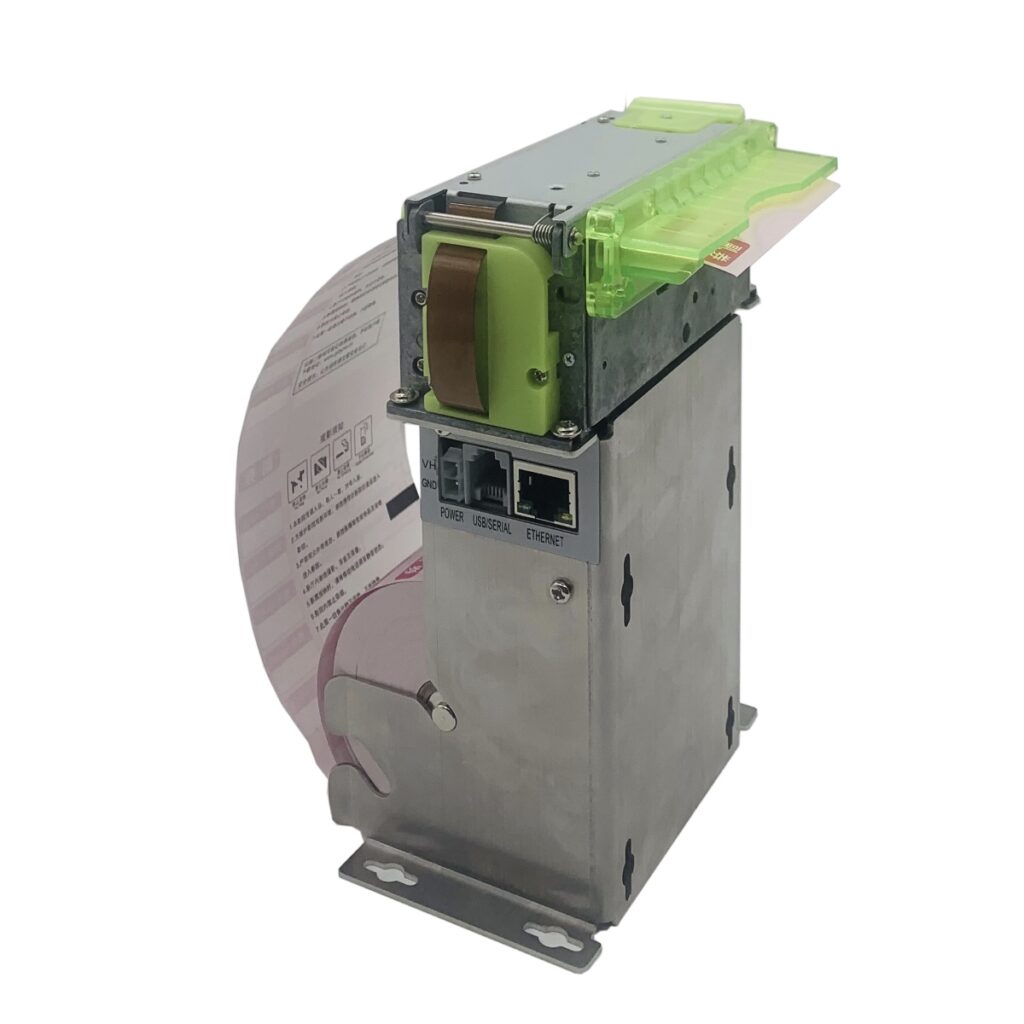Introduce:kiosk thermal printers use for in self-service kiosks
In today’s fast-paced world, businesses across various industries are turning to self-service kiosks to streamline operations, improve customer experiences, and reduce costs. At the heart of these kiosks, one crucial piece of technology plays a pivotal role in ensuring efficiency: the kiosk thermal printer. Whether used for printing receipts, tickets, or labels, these printers are transforming how businesses manage transactions and communication with customers.
Why Kiosk Thermal Printers are Essential for the Retail Industry
The retail industry has long been a key adopter of self-service kiosks. As large and medium-sized retailers, supermarkets, and even e-commerce platforms with self-pickup lockers increasingly rely on kiosks for customer interaction, having a reliable, fast, and durable kiosk thermal printer is no longer optional; it’s a necessity.
Thermal printers, compared to traditional inkjet or dot matrix printers, offer significant advantages. They don’t require ink cartridges, which reduces maintenance and operational costs. Their speed and low noise make them perfect for high-traffic environments like grocery stores and large retail outlets where fast printing of receipts, invoices, and coupons is crucial.
Key Features for Retailers
- High-speed printing: Retailers need printers that can handle a high volume of transactions, and thermal printers provide the speed necessary to keep customers moving through self-checkout counters or kiosks.
- Durability: With high-frequency usage in retail, thermal printers must be able to withstand long hours of operation. Kiosk thermal printers are known for their long lifespan, even in high-demand environments.
- Seamless Integration: Kiosk thermal printers easily integrate with various self-service terminals, ensuring that the entire system functions without interruptions.
- Quiet operation: The low-noise feature is an advantage in environments where the customer experience matters, making the interaction smoother and less disruptive.

Applications in Other Industries: Transportation, Healthcare, and More
While the retail industry may have led the way, the kiosk thermal printer has also made a significant impact across many other sectors. Let’s take a closer look at how different industries are leveraging thermal printing technology.
Transportation Industry
Self-service kiosks in the transportation industry, including bus terminals, metro stations, airports, and parking management systems, rely heavily on kiosk thermal printers for ticketing. Thermal printers can handle various ticket sizes, print clearly even in high-demand settings, and operate quietly to prevent disruptions in busy locations.
Pain Point: Transportation systems often struggle with high-volume printing needs. Kiosk thermal printers excel in handling large customer volumes while ensuring fast and accurate ticket printing.
Healthcare Industry
In hospitals, clinics, and pharmacies, kiosks play a crucial role in patient self-registration and managing prescriptions. Thermal printers in these settings ensure quick and accurate printing of patient details, prescriptions, and test results.
Pain Point: Medical facilities require high reliability and accuracy in their printing devices. Kiosk thermal printers meet this demand by delivering clear, legible printouts and working in time-sensitive environments.
Food & Beverage
From fast-food chains to coffee shops, kiosks in the food and beverage industry are increasingly used for order confirmations, receipts, and payment vouchers. Thermal printers, with their fast printing speeds, help reduce wait times and provide high-frequency use without the need for extensive maintenance.
Pain Point: Restaurants and food service businesses require quick printing speeds to meet customer demand, making thermal printers an ideal choice for high-traffic areas.
Fitness & Health
Self-service kiosks are making their mark in gyms and fitness centers, where they are used for check-ins, membership card printing, and workout summaries. Thermal printers provide compact, reliable solutions that are essential for creating quick, accurate printouts for gym-goers.
Pain Point: The demand for compact, space-saving designs that still offer high durability is a challenge. Kiosk thermal printers meet this need while offering ease of maintenance and reliable performance.
How Kiosk Thermal Printers Improve Customer Experience
The beauty of kiosk thermal printers lies in their ability to enhance the customer experience. By enabling self-service, customers enjoy faster service and greater autonomy, which ultimately leads to increased satisfaction. Whether it’s purchasing tickets at an amusement park, printing boarding passes at an airport, or receiving a receipt after a purchase, these printers reduce human error, provide a seamless user experience, and save time.
Additionally, their low maintenance requirements (no ink cartridges or toners to replace) ensure that businesses can focus on improving customer service rather than dealing with frequent printer issues.
The Environmental Benefits of Thermal Printers
Beyond their operational benefits, thermal printers are also environmentally friendly. Since they don’t require ink or toner, they generate less waste. Additionally, many modern thermal printers use energy-efficient technology, which aligns with the growing push for sustainable business practices in industries such as retail, transportation, and healthcare.
Conclusion
As businesses continue to embrace self-service kiosks, the kiosk thermal printer will remain a crucial component of many industries. From retail to transportation, healthcare, food & beverage, and beyond, thermal printing technology is providing businesses with a reliable, efficient, and cost-effective way to handle high-volume printing. By offering speed, durability, and low maintenance, thermal printers are paving the way for better customer experiences and operational efficiency.
Looking for the best kiosk thermal printers for your business? Consider choosing models that offer high-speed printing, robust performance in high-volume environments, and the ability to integrate seamlessly with your self-service systems.


